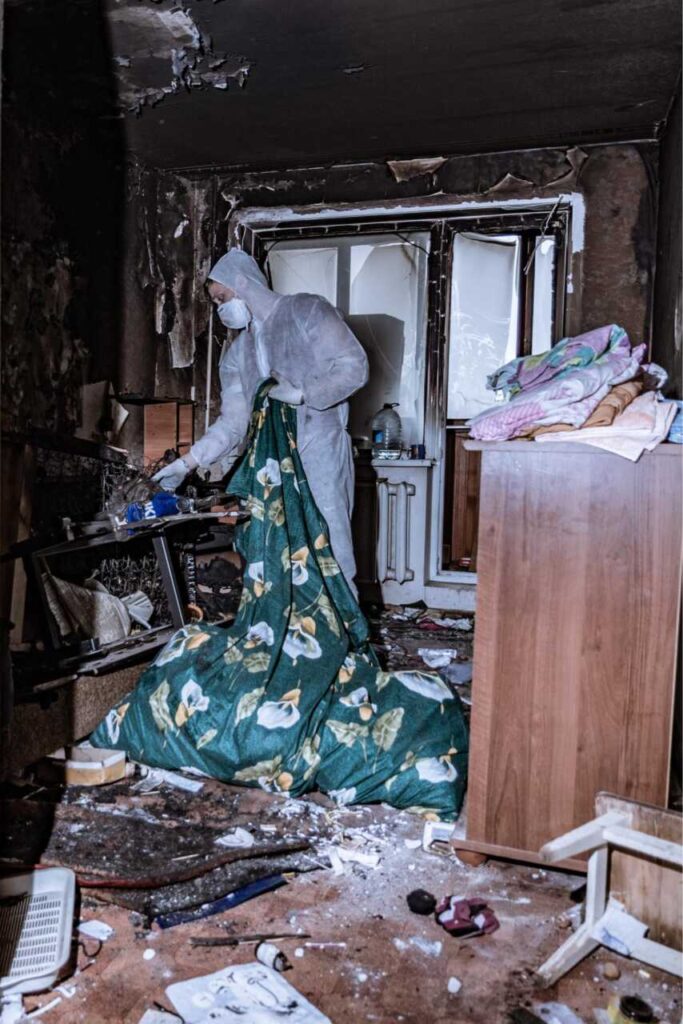
Contents
If you think fire or water damage is just a minor inconvenience, you’re in for a surprise. The aftermath can be overwhelming, and knowing where to start is vital. It’s not just about fixing what’s visible; it’s about ensuring safety and preventing further issues. By understanding the essential steps, you can navigate the repair process more effectively. Let’s explore the key tips that can help you tackle these challenges with confidence.
Key Takeaways
- Conduct a thorough damage assessment to identify and document structural issues, mold growth, and electrical system compromises.
- Implement safety measures, including checking for fire hazards, avoiding contaminated water, and using personal protective equipment.
- Use appropriate water extraction techniques such as wet/dry vacuums and professional pumps to remove standing water effectively.
- Address smoke and soot removal promptly using specialized cleaning solutions and ensure proper ventilation to eliminate odors.
- Focus on restoration and repair by evaluating structural integrity, tackling mold remediation, and prioritizing durable, moisture-resistant materials.
Assessing the Damage
When facing fire or water damage, it’s crucial to thoroughly assess the situation before moving forward. Start with a thorough damage evaluation to identify the extent of the destruction. Look for structural issues, mold growth, and compromised electrical systems. Document everything meticulously; photos and written notes will support your insurance claims later.
Involving professionals can provide valuable insights—don’t hesitate to reach out for help. They can pinpoint hidden damage that you might overlook, ensuring nothing critical is missed. Be sure to keep your insurance provider in the loop; they may require specific details for your claim to be processed efficiently.
Prioritizing Safety Measures
Prioritizing safety measures is vital after experiencing fire or water damage to protect yourself and others. You need to act carefully to prevent further harm. Consider these important steps:
- Verify fire safety by checking for lingering smoke or hotspots.
- Implement water containment strategies to minimize additional damage.
- Use personal protective equipment (PPE) to guard against hazardous materials.
Begin by evaluating your environment. If there’s any risk of structural collapse or electrical hazards, evacuate immediately. Always avoid standing water, as it may contain contaminants or pose an electrical shock risk. Once it’s safe, focus on containment—use barriers to limit water spread and protect unaffected areas. Remember, you’re not alone in this; reach out for help if needed. By prioritizing safety, you not only protect yourself but also foster a supportive community that understands the challenges of fire and water damage recovery.
Effective Water Extraction Techniques
Effective water extraction is essential to mitigate damage and prevent mold growth after a flooding incident. In an emergency response situation, the first step is to assess the extent of the water damage. Use a wet/dry vacuum to remove standing water quickly and efficiently. For larger areas, professional-grade pumps can be invaluable.
Once you’ve extracted the bulk of the water, use dehumidifiers and fans to dry out the affected spaces thoroughly. Monitor humidity levels to guarantee they drop below 60% to inhibit mold growth.
Don’t forget to check hidden areas like under carpets or inside walls, as trapped moisture can lead to long-term issues. Always prioritize your safety; wear protective gear and verify that electricity is turned off in flooded zones. By taking these steps, you not only restore your space but also create a safe, healthy environment for everyone in your home.
Smoke and Soot Removal Strategies
Although smoke and soot can linger long after a fire is extinguished, addressing these residues promptly is crucial for restoring your space and protecting your health. Ignoring them can lead to persistent smoke odor and further damage. Here are some key strategies for effective soot cleanup:
- Use specialized cleaning solutions: Invest in products designed for fire damage to break down soot effectively.
- Ventilate your space: Open windows and doors to help dissipate smoke odor while using fans to circulate fresh air.
- Consider professional help: When in doubt, hiring experts guarantees thorough cleanup and prevents long-term issues.
Restoring and Repairing Affected Areas
Restoring and repairing areas affected by fire and water damage demands a methodical approach to guarantee both aesthetics and safety. Begin by evaluating the structural integrity of your property; any weakened beams or compromised walls must be addressed first. This assures that your home remains safe and sound.
Next, tackle mold remediation. The moisture from water damage creates a breeding ground for mold, which can lead to health risks. It’s essential to remove affected materials and use specialized treatments to eliminate mold spores completely.
Once the structure is secured and mold is handled, you can focus on cosmetic repairs. Choose materials that match your home’s original design while keeping in mind durability and moisture resistance. Remember, restoring your space isn’t just about fixing damage; it’s about rebuilding a safe, welcoming environment that feels like home again. Your attention to detail will make all the difference in your recovery journey.
Finath Thoughts
In the aftermath of fire and water damage, it’s vital to tackle repairs methodically. By evaluating the damage, prioritizing safety, and employing effective extraction and cleaning techniques, you can pave the way for a successful restoration. Remember, tackling these challenges head-on can prevent further issues down the line. When it comes to repairs, don’t let the dust settle; stay proactive to guarantee your home returns to its former glory. You’ve got this!
Recent Posts
What Is 24/7 Fire Damage Recovery?
When faced with the unfortunate aftermath of a fire, it’s vital to have a reliable
5 Tips for 24/7 Fire Damage Recovery
When faced with the aftermath of a fire, your immediate actions can greatly impact the
Putting Out Fires and Mopping Up Messes; Fire Damage Clean-Up
You might find it coincidental how often fires and messes occur together, creating chaos that
